
The Marius knitting pattern is a traditional Norwegian motif that has been beloved by knitters for generations. The pattern features a bold, geometric design with a repeating diamond motif and intricate colorwork. It is named after its creator, Unn Søiland Dale, who was inspired by the traditional costumes worn by the Sami people in Northern Norway.
The Marius knitting pattern is known for its versatility and adaptability. It can be used to create a wide range of items, including sweaters, hats, mittens, and blankets. The pattern is typically worked in a medium weight yarn and requires intermediate knitting skills.
One of the reasons the Marius knitting pattern is so popular is its timeless appeal. The bold design and rich colors make it a classic choice for both men’s and women’s garments. The pattern has also been embraced by knitters around the world, who have put their own spin on it by experimenting with different color combinations and incorporating the motif into modern designs.
A Brief History of the Marius Pattern
The Marius pattern is a popular traditional Norwegian knitting pattern that has become an iconic symbol of Norwegian heritage and culture. It was first created in the 1950s by Unn Søiland Dale, a renowned Norwegian designer, who drew inspiration from traditional Scandinavian folk motifs and patterns.
The Marius pattern features a distinctive design of diamonds and crosses, with small dots woven between them. The pattern is traditionally knit in two or three colors, with the main color forming the background and the contrasting colors used for the motif. The colors typically used are red, white, and blue, representing the Norwegian flag.
The Marius pattern quickly gained popularity in Norway and became associated with the rugged and outdoorsy Norwegian lifestyle. It has been used in various forms of apparel, including sweaters, hats, scarves, and mittens. The pattern is not only aesthetically pleasing but also provides warmth and durability, making it perfect for the cold Norwegian climate.
Over the years, the Marius pattern has become an enduring symbol of Norwegian identity and pride. It has been passed down through generations and remains a beloved and widely recognized pattern in Norway. The popularity of the pattern has also spread internationally, with many people around the world embracing the Marius design in their knitting projects.
In conclusion, the Marius pattern is a timeless and treasured part of Norwegian knitting culture. Its unique design and symbolism make it a cherished piece of heritage that continues to be celebrated and enjoyed by knitters of all ages.
Materials needed for knitting the Marius pattern
In order to knit the Marius pattern, you will need a few essential materials. These materials include:
- 3.5mm knitting needles
- 4mm knitting needles
- 250-300 grams of worsted weight yarn in the main color
- small amounts of worsted weight yarn in contrasting colors for the pattern
- stitch markers
- yarn needle
- scissors
The 3.5mm and 4mm knitting needles are necessary for achieving the correct gauge and tension for the Marius pattern. It is important to use the recommended needle sizes or adjust the pattern accordingly to ensure the desired result.
The Marius pattern typically uses a main color for the majority of the garment, with contrasting colors used for the pattern. The amount of yarn needed will depend on the size of the project and personal tension, but it is recommended to have around 250-300 grams of worsted weight yarn in the main color, and smaller amounts of contrasting colors.
Stitch markers are useful for keeping track of specific stitches or sections in the pattern. These markers can be placed on the knitting needles to indicate where certain actions need to be taken, such as increases or decreases.
A yarn needle is necessary for weaving in the loose ends of yarn and sewing pieces together, if necessary. Scissors are needed for cutting the yarn at the beginning or end of the project, and for trimming any excess yarn.
Knitting techniques used in the Marius pattern
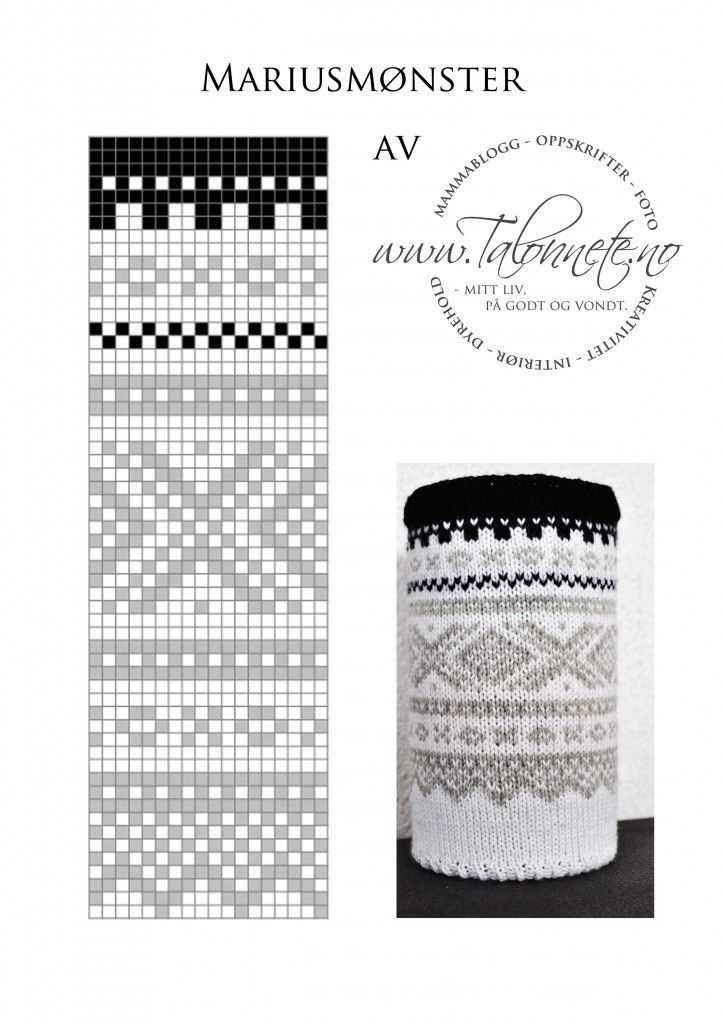
The Marius pattern is a popular traditional Norwegian knitting pattern that is known for its intricate design and rich history. It incorporates several knitting techniques that add depth and texture to the finished piece.
Colorwork:
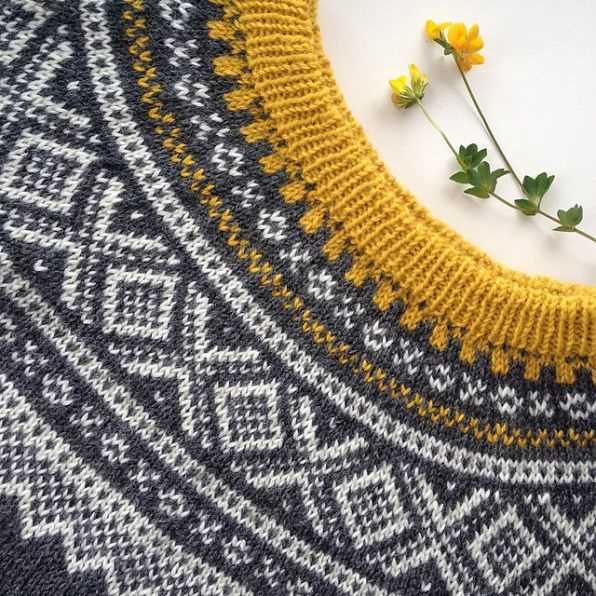
One of the prominent techniques used in the Marius pattern is colorwork. The pattern typically consists of a main color and several contrasting colors that are used to create geometric motifs and patterns. Knitters can use stranded colorwork or intarsia techniques to achieve the desired designs.
Knit & purl stitches:
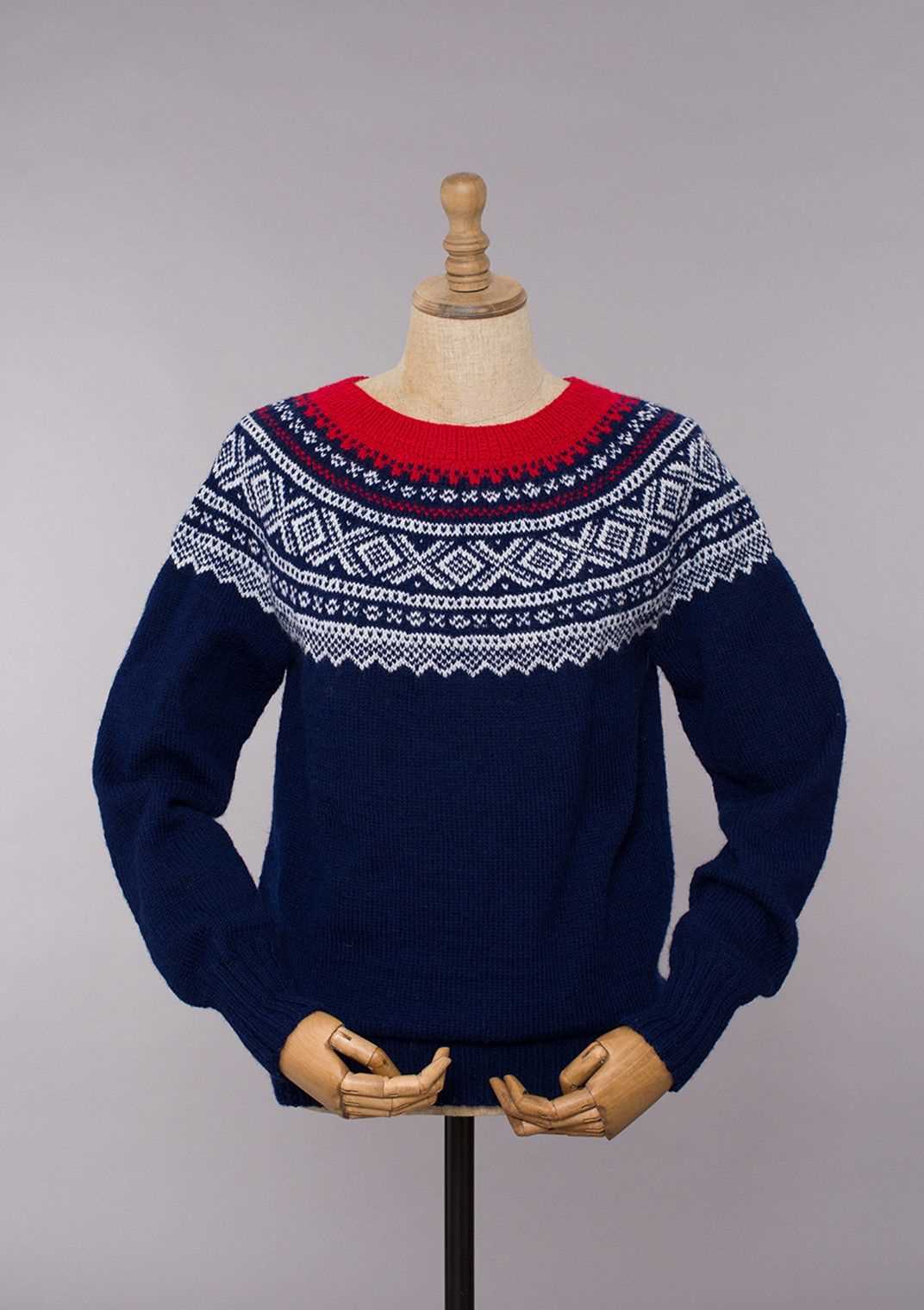
The Marius pattern also makes use of basic knit and purl stitches. These stitches are used to create the background fabric and provide texture to the design. Knitting the main body of the pattern in stockinette stitch and incorporating ribbing for cuffs and borders are common techniques used in the Marius pattern.
Cables:
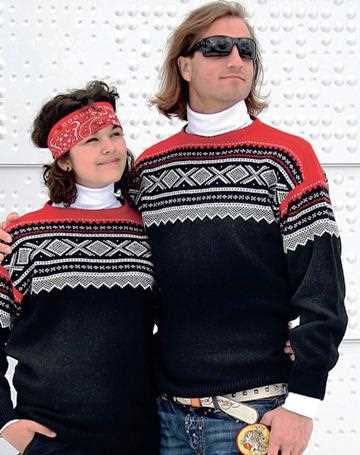
Cables add an additional layer of interest to the Marius pattern. They are created by crossing stitches over each other, creating a twisted effect. Cables can be used to highlight certain motifs or create structural elements within the design.
Lacework:
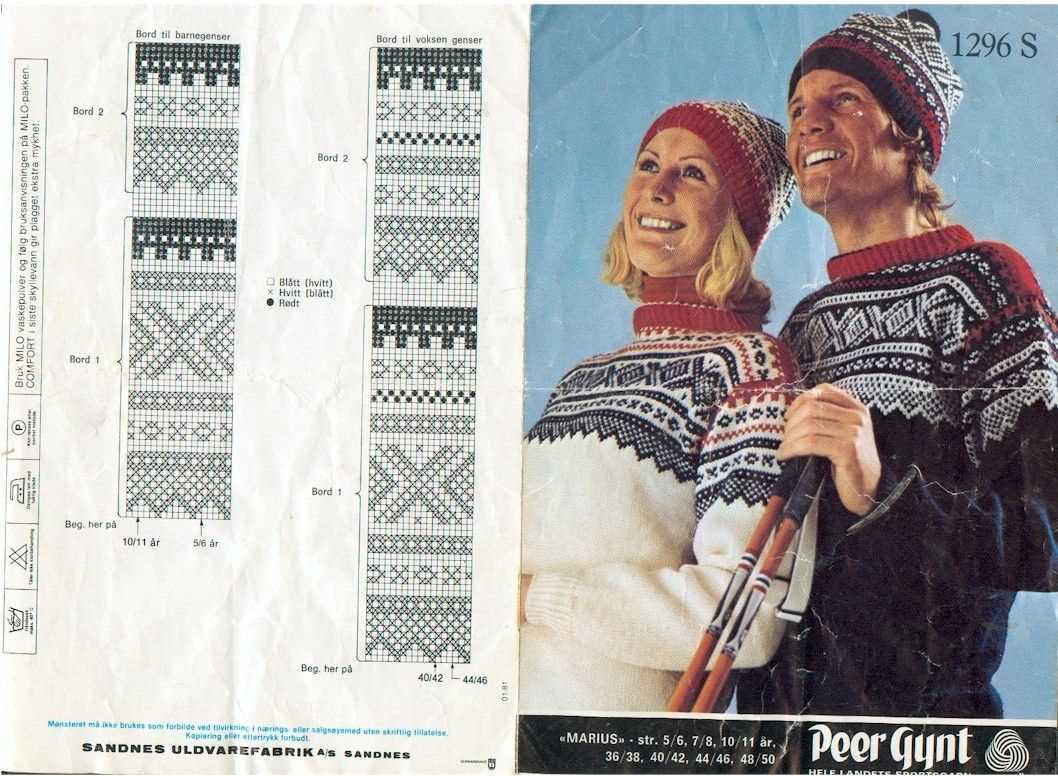
In some variations of the Marius pattern, lacework is incorporated to add delicate and intricate details. Lace patterns typically involve yarn overs and decreases to create decorative motifs and openwork designs.
All these knitting techniques come together to create the unique and visually stunning Marius pattern. Whether you’re a beginner or an experienced knitter, trying out this pattern is a great way to explore and master different knitting techniques.
Step-by-step instructions for knitting the Marius pattern
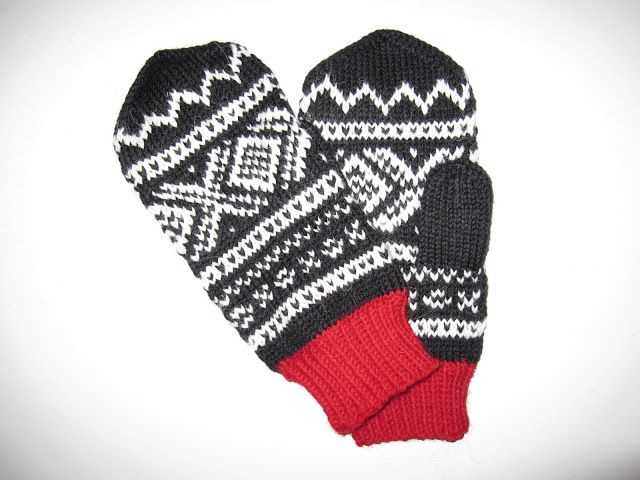
The Marius pattern is a popular Norwegian knitting pattern that features a distinctive diamond and cross design. Knitting this pattern requires intermediate to advanced knitting skills, as it involves different colorwork techniques and pattern repeats. With these step-by-step instructions, you’ll be able to create your own Marius patterned garment or accessory.
Materials Needed:
- Yarn in two or more colors, preferably a wool or wool-blend yarn for warmth
- Circular knitting needles or double-pointed needles in a size appropriate for your yarn
- Tapestry needle
- Stitch markers
1. Casting On:
Start by casting on the desired number of stitches for your project. The Marius pattern typically requires a multiple of 8 stitches, so choose a number that works for your desired size. Place a stitch marker to mark the beginning of the round.
2. Knitting the Ribbing:
Knit the first few rounds in a ribbing pattern, such as K2, P2, to create a stretchy and decorative edge for your project. Continue knitting in the ribbing pattern until the desired length is reached.
3. Starting the Marius Pattern:
Referencing the Marius pattern chart or written instructions, begin working the Marius pattern. This usually involves knitting with two different colors and following a specific pattern of knits and purls. Keep track of your progress with stitch markers if needed.
4. Repeating the Pattern:
Continue working the Marius pattern for the desired number of pattern repeats or until the piece measures the desired length. Pay attention to any color changes or shaping that may be included in the pattern.
5. Finishing the Piece:
Once the Marius pattern is complete, finish the piece by knitting a few rounds in a ribbing pattern to match the ribbing at the beginning. Bind off your stitches and weave in any loose ends with a tapestry needle. Block your finished project to even out the stitches and enhance the overall appearance.
Now that you have the step-by-step instructions, you can confidently start knitting the Marius pattern. Whether you choose to make a cozy sweater, hat, or mittens, this classic Norwegian design is sure to impress.
Tips and tricks for knitting the Marius pattern
The Marius pattern is a classic Norwegian knitting pattern that features a distinctive geometric design. If you’re planning to knit a Marius-style garment or accessory, here are some helpful tips and tricks to ensure your project turns out beautifully.
Choose the right yarn
When knitting the Marius pattern, it’s important to choose a yarn that is suitable for colorwork. Look for a yarn that has good stitch definition and is not too slippery, as this will make it easier to work with multiple colors and create the crisp lines of the pattern. Wool or wool-blend yarns are often a good choice for colorwork projects.
Practice fair isle knitting
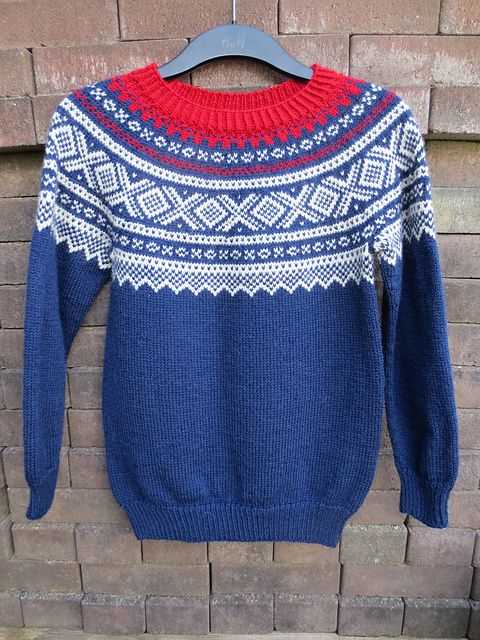
The Marius pattern typically involves fair isle knitting, where you work with multiple colors in a single row. If you’re new to fair isle knitting, it’s a good idea to practice the technique before starting your Marius project. Experiment with tension and different color combinations to familiarize yourself with the technique and ensure that your colorwork comes out evenly.
Use stitch markers
Stitch markers can be incredibly helpful when knitting the Marius pattern, especially if you’re working with multiple colors or complex motifs. Use stitch markers to divide different sections of the pattern or to mark specific stitch counts. This will help you keep track of where you are in the pattern and make it easier to catch any mistakes early on.
Pay attention to gauge
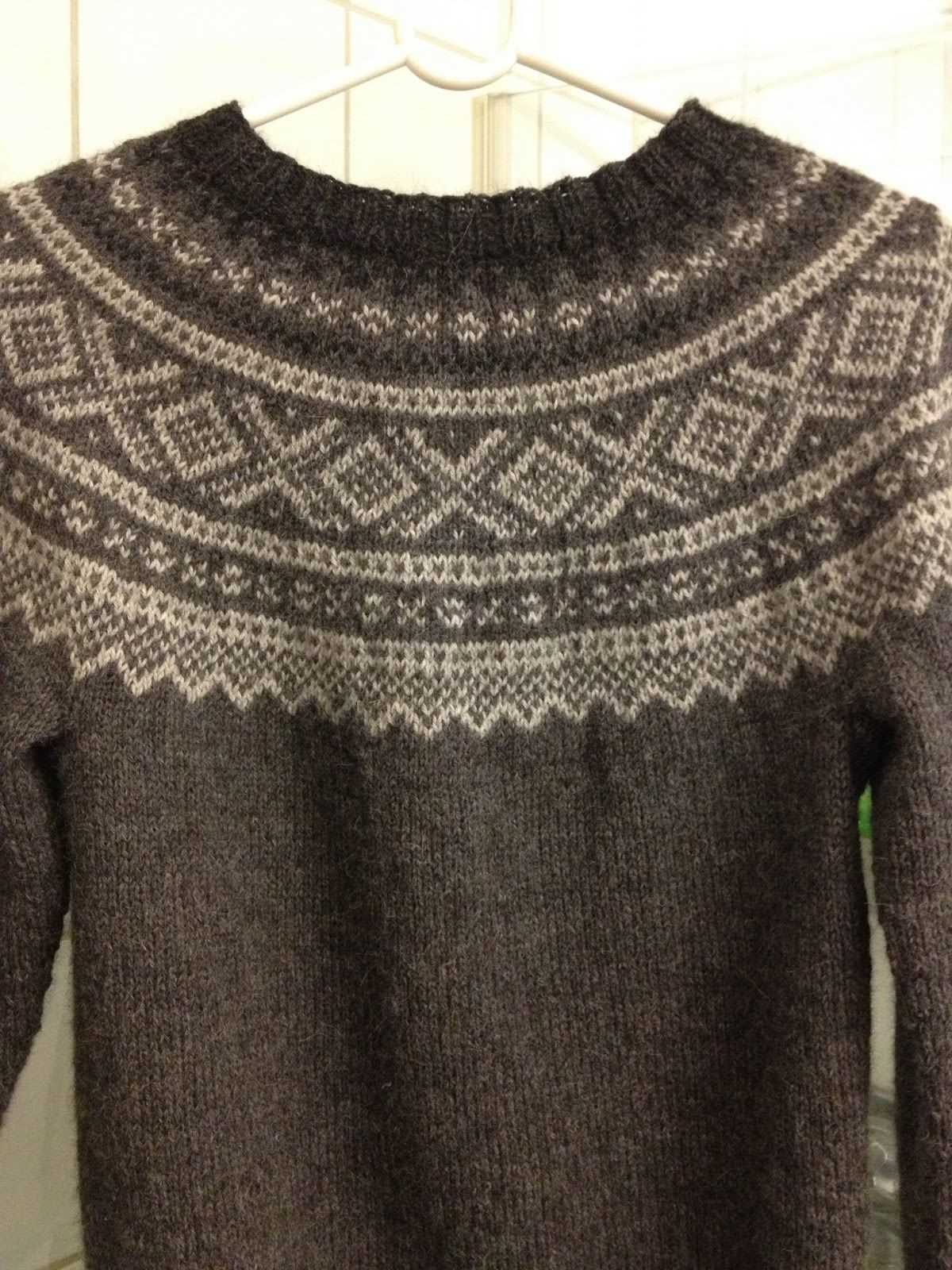
Gauge is particularly important when knitting the Marius pattern, as it can affect the overall sizing and fit of your finished project. Take the time to swatch and check your gauge before starting your project, and make any necessary adjustments to ensure that your finished garment or accessory turns out the way you want it to. Remember, gauge can vary depending on your tension and the yarn you’re using, so it’s worth taking the time to get it right.
Block your finished project
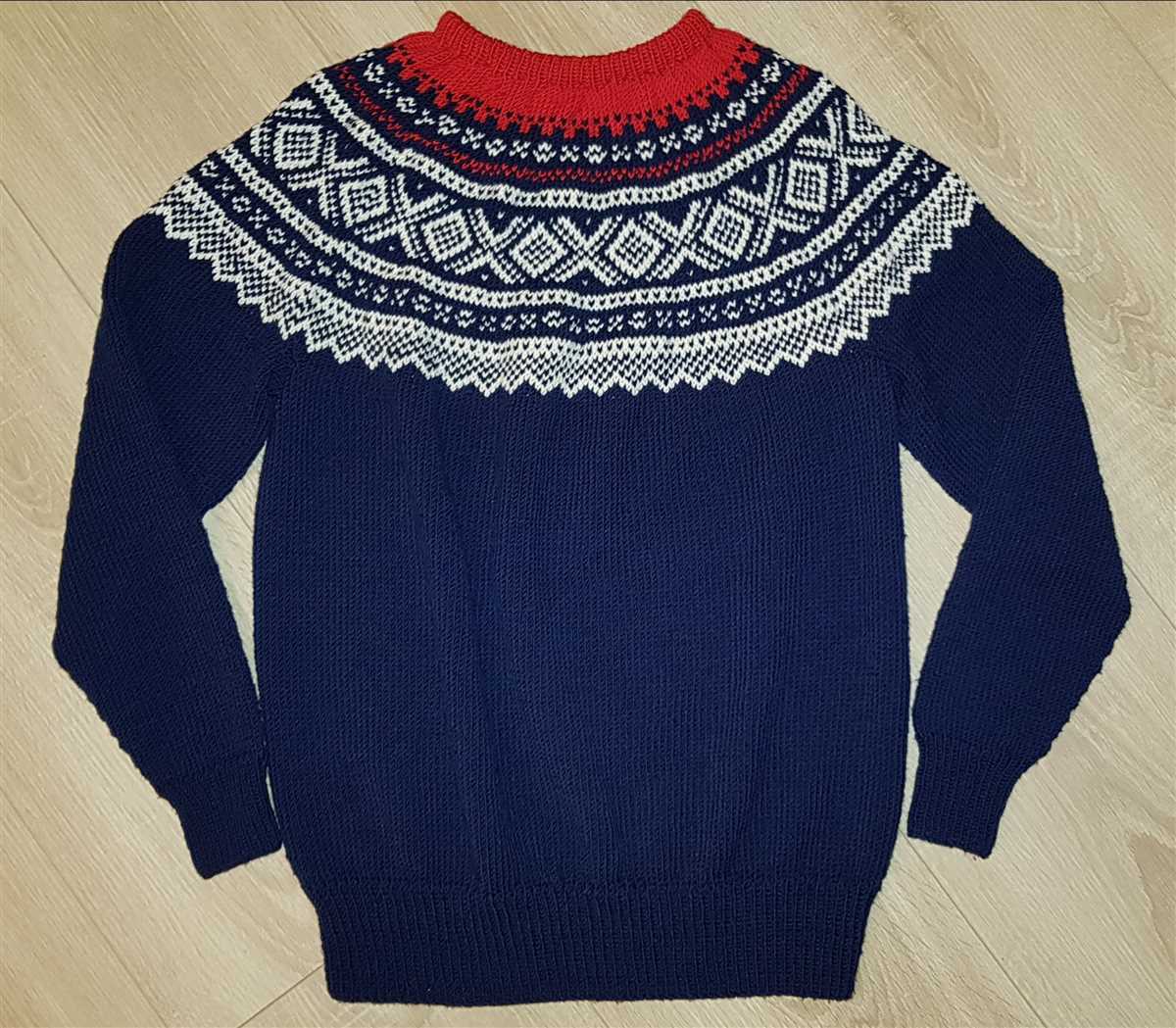
Blocking is an essential step for any knitting project, and it’s especially important for colorwork patterns like Marius. Blocking helps to even out your stitches, open up the pattern, and give your finished project a polished and professional look. Follow the instructions for blocking your chosen yarn to ensure the best results.
Inspiration and ideas for using the Marius pattern
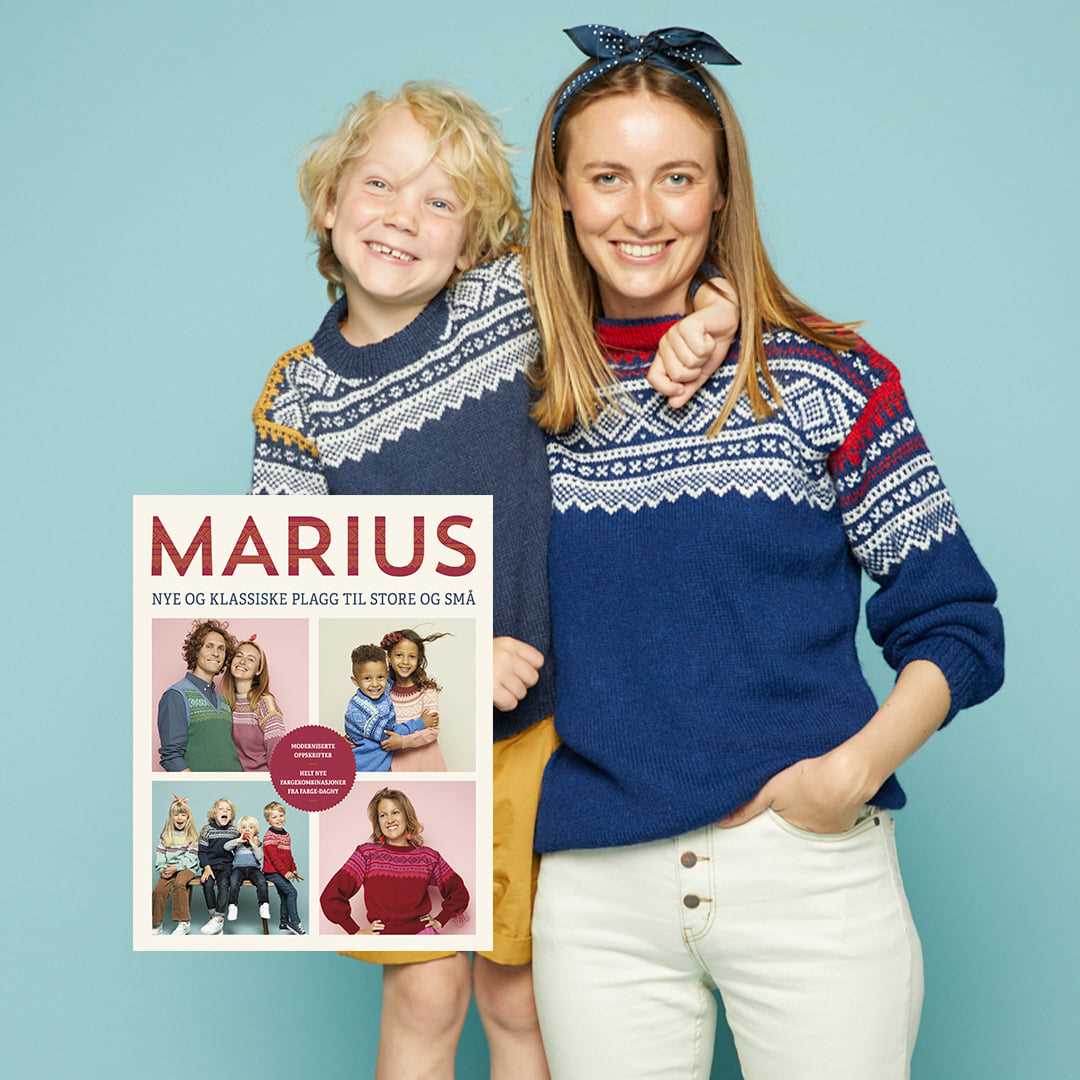
The Marius pattern is a classic Norwegian motif that has been used in various types of clothing and accessories for many years. Its timeless design and vibrant colors make it a versatile pattern that can be used in a variety of projects. Whether you are an experienced knitter or just starting out, the Marius pattern offers endless possibilities for creativity and personalization.
One of the most popular ways to use the Marius pattern is in knitting sweaters and cardigans. By using the pattern as an accent or all-over design, you can create a unique and eye-catching garment that is perfect for both casual and formal occasions. The vibrant colors and intricate motifs of the Marius pattern add a touch of elegance and tradition to any sweater.
Accessories
In addition to sweaters, the Marius pattern can also be used to create a wide range of accessories. From hats and scarves to mittens and socks, the possibilities are endless. By incorporating the Marius pattern into your accessories, you can add a pop of color and personality to your winter wardrobe.
Another creative way to use the Marius pattern is in home decor. Whether you want to create a cozy blanket or a set of decorative cushions, the Marius pattern can add a touch of Nordic charm to any room. By using the pattern in different colors and scales, you can create a unique and personalized look that reflects your own style and preferences.
Children’s Clothing
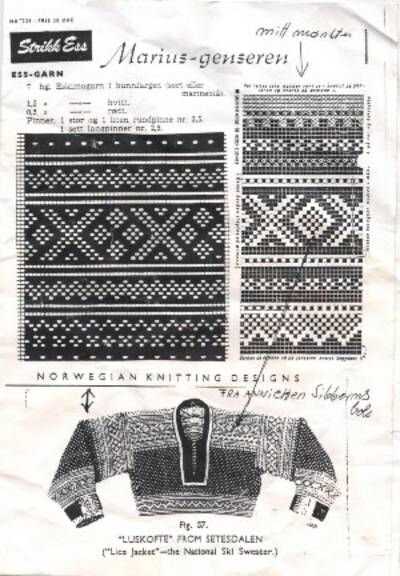
The Marius pattern is also perfect for creating adorable and cozy clothing for children. From baby booties and rompers to sweaters and dresses, the Marius pattern can add a charming and playful touch to any child’s outfit. By using the pattern in soft and durable yarns, you can create clothing that is not only stylish but also comfortable for your little ones.
- Knitting sweaters and cardigans
- Creating accessories
- Decorating your home
- Designing children’s clothing
These are just a few ideas and inspirations for using the Marius pattern. Whether you are a beginner or an experienced knitter, the Marius pattern offers endless possibilities for creativity and personalization. So grab your knitting needles and start exploring the world of Marius!
Frequently asked questions about the Marius pattern
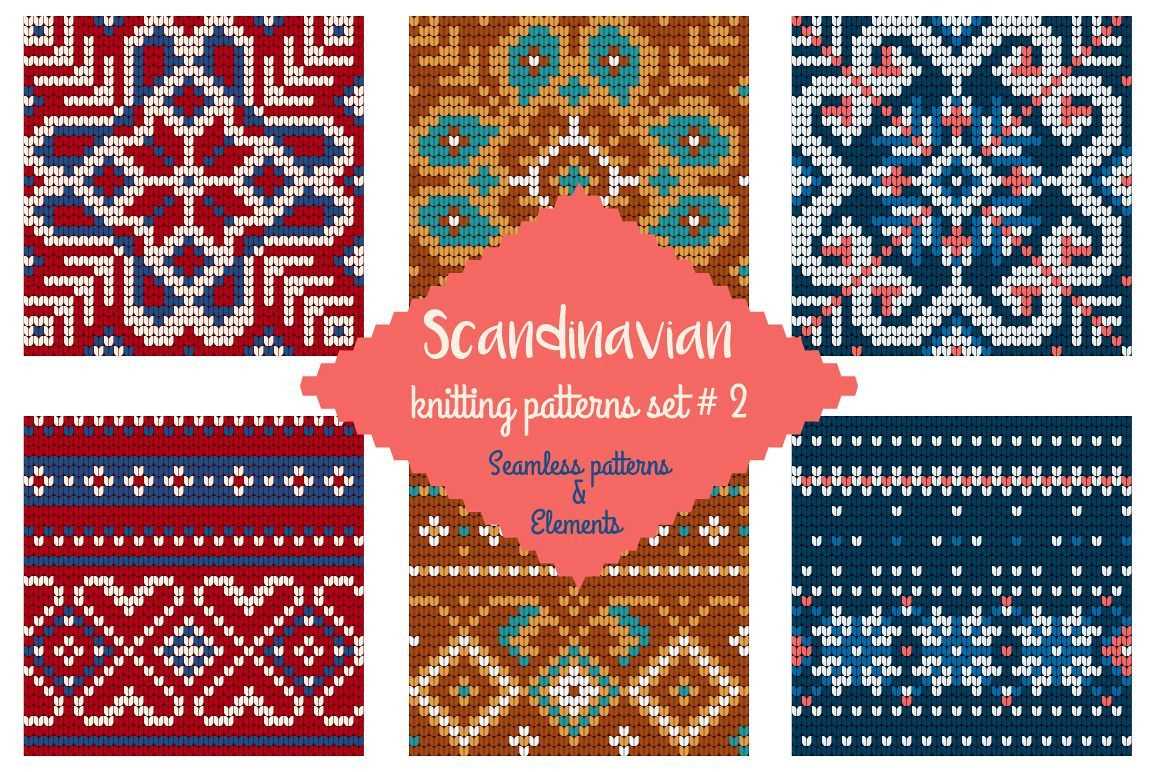
The Marius knitting pattern is a popular design inspired by traditional Norwegian sweaters. It features a distinctive geometric motif that is loved by knitters around the world. If you’re thinking about knitting a Marius sweater or have already started, you may have some questions about the pattern. We’ve compiled a list of frequently asked questions to help you out:
1. Where can I find the Marius knitting pattern?
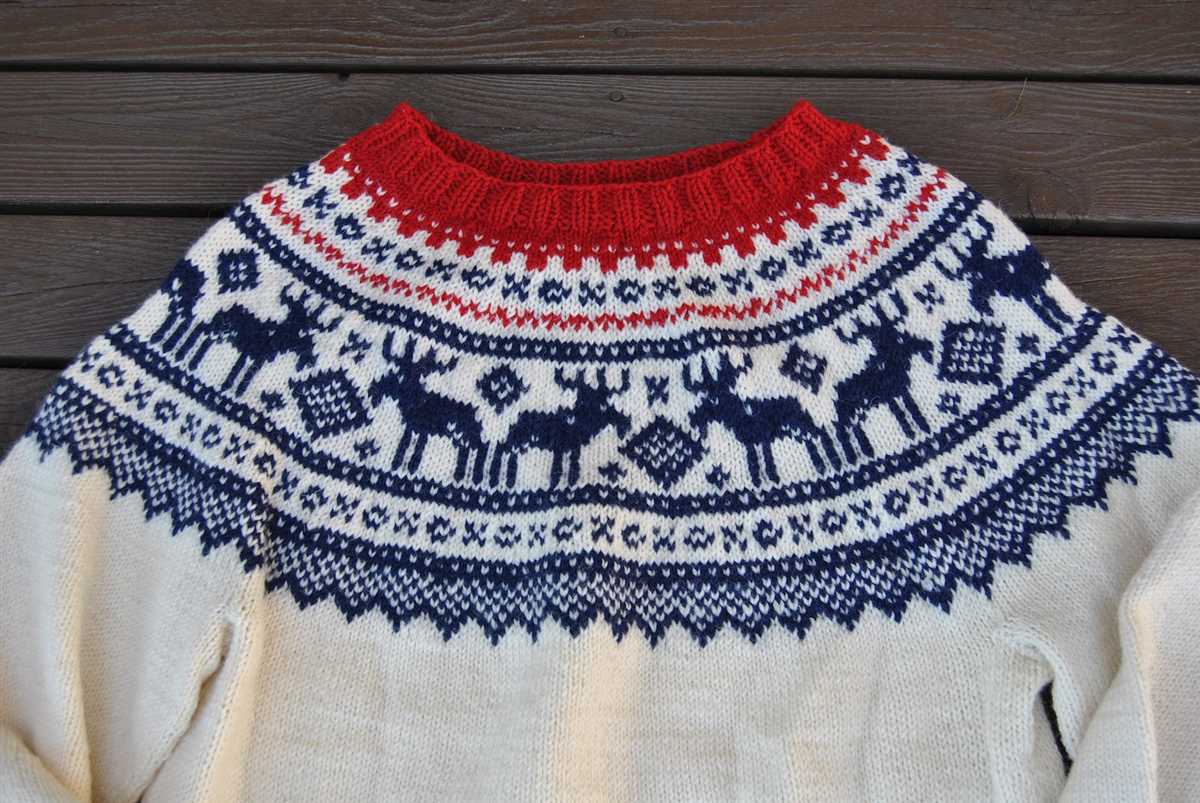
The Marius knitting pattern is widely available online. You can find it on various knitting websites, in knitting books, and even on some yarn company websites. A simple internet search for “Marius knitting pattern” will provide you with many options to choose from.
2. What skill level is required to knit the Marius pattern?
The Marius pattern is suitable for knitters with intermediate to advanced skill levels. It includes colorwork techniques such as stranded knitting and requires familiarity with reading color charts. If you are a beginner knitter, it is recommended to start with simpler patterns before attempting the Marius design.
3. What materials do I need to knit a Marius sweater?
To knit a Marius sweater, you will need a set of appropriate knitting needles in the recommended size for your chosen yarn. You will also need multiple colors of yarn to create the colorwork motif. The specific yarn weight and needle size will vary depending on the pattern you choose. It is important to refer to the pattern instructions for the recommended materials.
4. Can I modify the Marius pattern?
Yes, you can modify the Marius pattern to suit your personal preferences. You can change the colors of the design, adjust the size, or even incorporate the motif into different types of garments or accessories. Just make sure to keep track of any modifications you make and adjust the pattern instructions accordingly.
5. How long does it take to knit a Marius sweater?
The time it takes to knit a Marius sweater will vary depending on your knitting speed, experience level, and the complexity of the pattern. As a rough estimate, it can take anywhere from several weeks to a few months to complete a Marius sweater. It’s important to remember that knitting is a leisurely activity, so take your time and enjoy the process.
In summary, the Marius knitting pattern is a beloved design that requires intermediate to advanced knitting skills. It can be found online and in various knitting resources. Make sure to gather the necessary materials and adjust the pattern to your liking. Knitting a Marius sweater is a rewarding project that may take some time, but the end result is a beautiful and timeless garment.